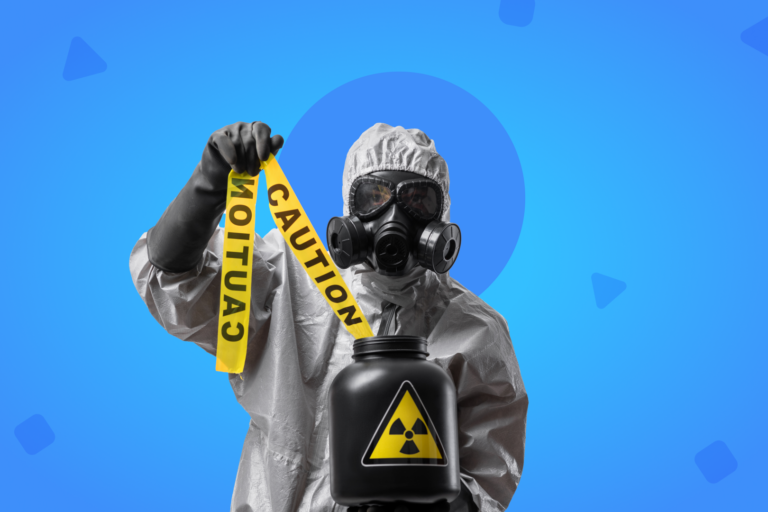The use of cold storages, vital for food safety and security, entails a series of associated dangers for the workforce, which require the rigorous and timely implementation of various preventive measures.
Cold storages are one of the main links in modern industrial processes, especially in the strategic food sector. In fact, they are essential to guarantee the operability and competitiveness of all companies that work with perishable products, such as meat, fish, vegetables, fruits and dairy products, among others.
For this sector, having an efficient refrigeration system is vital in terms of safety, hygiene and competitiveness; and their presence can range from small freezers and sales cabinets, to large cold rooms.
This means having an extensive specialized workforce, which must work in extremely low temperature conditions. Consequently, each of its members is permanently exposed to various types of risks, which can affect and deteriorate their health, both physically, mentally and socially.
First of all, working in cold storages can favor the appearance of cold-related illnesses, such as flu, bronchitis or influenza, and aggravate chronic illnesses that the worker already has.
In addition, it can facilitate the occurrence of other incidents such as occupational accidents associated with exposure to cold in industrial environments; falls from wet or frozen floors; poisonings caused by refrigerant gases or other chemicals typical of the refrigeration process; and even collisions between cargo or transport equipment.
Legal framework
In Chile, occupational exposure to cold is regulated by Supreme Decree No. 594 of the Ministry of Health, published in the Official Gazette on 04/29/2000.
In its article 99, this legal body states that “exposure to cold is understood as the combinations of temperature and air speed that manage to lower the deep temperature of the worker’s body to 36°C, or less, with 35°C being the minimum temperature, admitted for a single occasional exposure”.
The same legal body establishes, in its article 100, that “workers exposed to the cold must be provided with adequate clothing, which must not be too tight and, furthermore, must be easily unbuttoned and removable.”
In the same way, the regulations establish that the outer clothing used by those who work in cold storages must be made of insulating material.
Besides, Article 101 provides that “in cases of danger due to exposure to cold, periods of rest in temperate zones or with suitable jobs must be alternated.”
Finally, article 102, establishes that “cold stores must have adequate security and surveillance systems, which facilitate the rapid exit of the worker in case of emergency.”
Hazards for the worker
The most characteristic negative effects of continuous exposure to cold, in an industrial work environment, can be very diverse.
The most direct are discomfort, impaired physical and manual development of the tasks performed, and a feeling of numbness in the hands, feet, cheeks, nose and ears.
In turn, the most serious consequences would be frostbite of the limbs and hypothermia (general cooling of the body, caused by the loss of body heat, which in extreme cases can cause death).
Thermal stress risk
Since working inside cold storages involves being constantly exposed to very low temperatures, it is important to remember that the human body generates energy through biochemical reactions based on the compounds that form food and the oxygen in the inhaled air.
Much of this energy is caloric, which allows the body’s temperature to be kept constant. For this reason, when the heat flow transferred to an icy environment is excessive, the body temperature drops, and then appears what is known as the “risk of heat stress due to cold”.
In this scenario, the body operates a series of mechanisms to increase the internal generation of heat. These are the “shivering” or body spasms that generate the necessary heat to compensate the loss of internal temperature; and vasoconstriction, which tries to decrease blood flow to the surface of the body.
For this reason, when the working conditions in cold stores make it impossible to eliminate risks through the body’s own mechanisms, it is necessary to evaluate and modify them, until they reach acceptable levels for the health and safety of the workers.
This objective can be achieved by establishing, for example, checklists that recognize the main risks associated with these work environments. From them, we can determine the pertinent preventive actions. These tasks can also be done with the support of specialized applications and software.
Prevention measures
Given the large number of risks associated with constant work in cold stores, it is essential to apply various preventive measures, so these tasks can be carried out in safe conditions.
First of all, we should use appropriate clothing, made of thermally insulating material, and permanently well fitted to the body. With this, it is possible to control and regulate the loss of body heat, and balance the thermo-hygrometric changes typical of a refrigerated environment.
To correctly assess the risk of general chilling that a worker may suffer if he does not use the appropriate clothing, we can apply the so-called IREQ index (Insulation Required for Clothing).
This quantifies the thermal insulation that workwear must provide, both in indoor and outdoor work, to avoid the net loss of heat from the body that could translate into general cooling and the risk of frostbite or hypothermia.
The starting point of this evaluation are the environmental measurements of temperature, air speed, humidity, radiation and estimation of the metabolic load.
With this method, we can evaluate stress both in terms of general body cooling, as well as local cooling in the areas of the body most sensitive to low thermal conditions, such as the extremities and the face.
In a complementary way, we can use electronic systems to measure skin temperature on hands, forehead or wrists, as is currently done to prevent COVID-19 infections.
Other important preventive measures to take in order to protect the health and safety of those who work in cold rooms are the following:
- Protect the extremities of workers, to avoid localized cooling.
- Select the appropriate clothing to facilitate the evaporation of sweat.
- Drink hot liquids to recover the loss of heat energy.
- Limit the consumption of coffee, due to its high diuretic effect and modifier of blood circulation. This helps to minimize losses of water and therefore heat.
- Use windproof clothing, to reduce the effect of air speed (in those geographical areas that are also exposed to the cold environment).
- Carry out prior medical examinations to detect circulatory dysfunctions, skin problems and pre-existing diseases that may be aggravated by working conditions.
- Replace damp clothing periodically, to avoid freezing of the water secreted by body sweating, and the consequent loss of heat energy.
- Use windbreak screens outdoors, and modify the air diffusers to reduce the speed of the air inside the chambers.
- Reduce the time spent in cold environments by applying agile shifts, to minimize heat loss.
- Control the work rate, so that the metabolic load is sufficient and does not exceed a value that generates excessive sweating.
- Adapt the clothes, footwear or other personal effects that the worker wears, especially during work time in the cold rooms.
- Allow sufficient rest times when handling cargo.
- Promote an adequate diet, to avoid hypoglycemia due to high energy consumption or due to cold.
- Mechanize heavy manual labor.
- Respect the regulated times of permanence in cold rooms, since exposure to the cold produces more clumsy movements, lack of dexterity and concentration, which contributes to increasing the risk of accidents.
- Make sure that anyone who works in a cold room can always leave it, installing doors that can be opened from the inside and outside.
- Entering a chamber always under the supervision of another worker.
- Install audible and luminous alarm signals outside the camera.
- Protect workers against the risk of slipping due to the accumulation of ice on surfaces (crystallization), with the use of non-slip footwear.
- Practice constant cleaning, disinfection and sterilization of material, surfaces and equipment.
Join DataScope now for free, clicking here!
DataScope is a platform which allows you to create custom incident reports, notify the involved by email or various notifications and do it with or without internet connection, staying in touch with all your field specialists.






